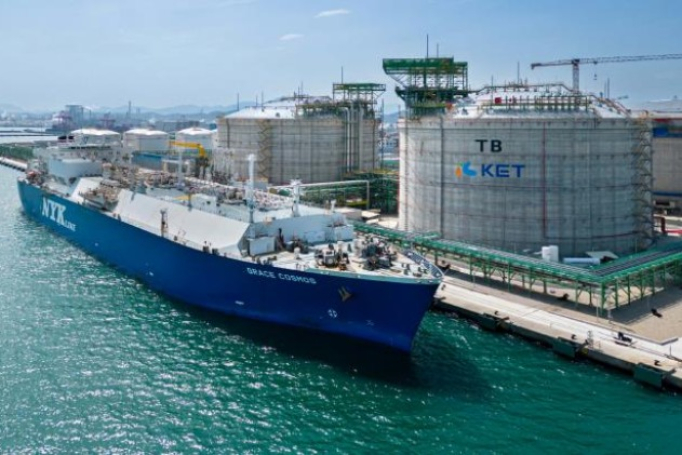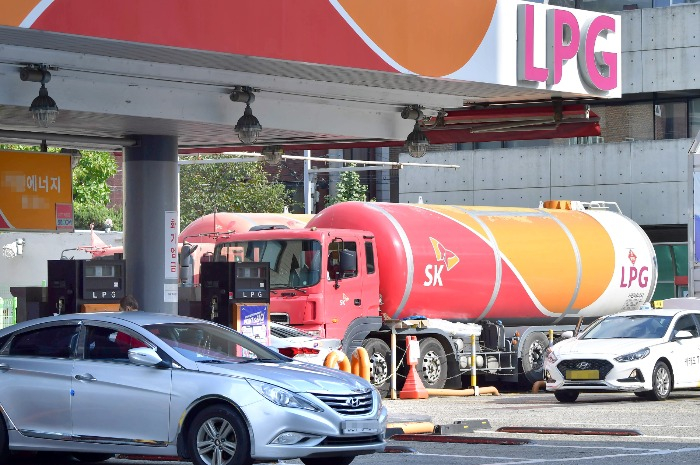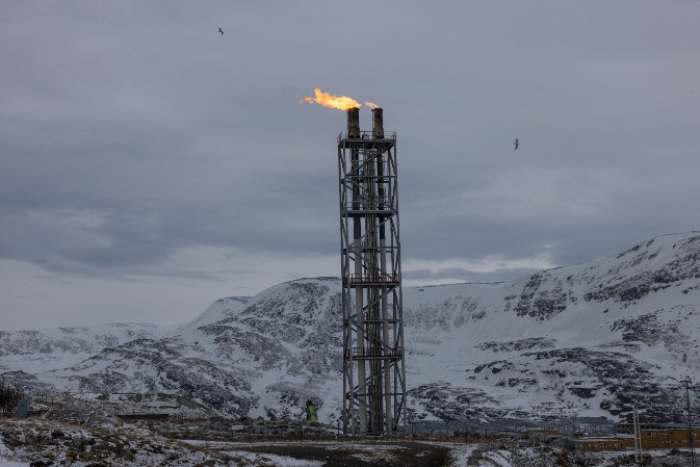SK GasŌĆÖ 1st LNG terminal completes test operations
With the completion of the terminal, SK will advance into the LNG midstream sector
By Apr 22, 2024 (Gmt+09:00)
S.Korea's LS Materials set to boost earnings ahead of IPO process


NPS to commit $1.1 billion to external managers in 2024


Samsung Heavy Industries succeeds autonomous vessel navigation


Samsung shifts to emergency mode with 6-day work week for executives


Korean battery maker SK On expects business turnaround in H2



SK Gas Ltd., South KoreaŌĆÖs No. 1 liquefied petroleum gas (LPG) distributor, has completed the test operation of its first liquefied natural gas (LNG) terminal in its first step forward to expand into the LNG trading market.
The company said on Monday that the LNG vessel of Grace Cosmos carrying about 65,000 tons of LNG unloaded it at the Korea Energy Terminal (KET) in the port of Ulsan, South Gyeongsang Province on April 5.
It then completed the cooling process of tanks and piping facilities.
SK has built the LNG terminal jointly with the Korea National Oil Corp. for commercial operations in the second half of this year.
With the completion of the terminal, SK is poised to enter the LNG midstream market, or storage of the fuel, beyond LPG imports.

Ulsan GPS is the worldŌĆÖs first LNG and LPG combined cycle power plant, using LNG and LPG as fuel. It is scheduled for commercial operation in the second half of this year simultaneously with the Korea Energy Terminal.
Its power generation capacity reaches 1.2 gigawatts, equivalent to one nuclear power plant.
The LNG stored in the first tank at the KET will be transported to Ulsan GPS through direct pipes connecting the two facilities. Its storage tanks will be leased to other SK Group units such as SK Energy Co. and S-Oil Corp.
Ulsan GPS, located about five kilometers away from the terminal, will use 900,000 to 1 million tons of LNG annually.

Including the three tanks at SKŌĆÖs hydrogen energy complex, dubbed Clean Energy Complex, near the KET, SK Gas will have a total of six LNG storage tanks with a total capacity of 7.2 million tons.
SK will continue test runs of both Korea Energy Terminal and Ulsan GPS until their commercial operations in the second half as scheduled.
ŌĆ£We will accelerate business expansion into the LNG field and grow into a major LNG operator in Northeast Asia by 2030,ŌĆØ said Yoon Byung Suk, chief executive of SK Gas.
The SK Group arm aims to transform into an LNG trader from imports to storage and distribution and eventually into a hydrogen energy supplier.
Write to Hyung-Kyu Kim at khk@hankyung.com
Yeonhee Kim edited this article.
-

-
 Carbon neutralityKoreaŌĆÖs SK Gas to invest $1.5 bn toward carbon neutrality by 2026
Carbon neutralityKoreaŌĆÖs SK Gas to invest $1.5 bn toward carbon neutrality by 2026Apr 27, 2023 (Gmt+09:00)
2 Min read -
 Hydrogen economySK Gas, Lotte Chemical to launch JV for hydrogen power generation
Hydrogen economySK Gas, Lotte Chemical to launch JV for hydrogen power generationJun 02, 2022 (Gmt+09:00)
3 Min read -
 EnergyS.Korea's top 2 LPG importers E1 and SK Gas cut supply price
EnergyS.Korea's top 2 LPG importers E1 and SK Gas cut supply priceJan 02, 2023 (Gmt+09:00)
1 Min read -
 Carbon neutralityS.KoreaŌĆÖs SK Gas expands LNG, hydrogen biz for future
Carbon neutralityS.KoreaŌĆÖs SK Gas expands LNG, hydrogen biz for futureSep 22, 2022 (Gmt+09:00)
2 Min read -
 Hydrogen economySK Gas invests in Bill Gates-backed hydrogen tech startup
Hydrogen economySK Gas invests in Bill Gates-backed hydrogen tech startupDec 08, 2021 (Gmt+09:00)
2 Min read -
 Corporate restructuringSK Gas to sell Istanbul tunnel stake to Qatari fund for $111 mn
Corporate restructuringSK Gas to sell Istanbul tunnel stake to Qatari fund for $111 mnJun 16, 2022 (Gmt+09:00)
1 Min read -
 SK Gas sets sights on liquid hydrogen as LPG market fizzles
SK Gas sets sights on liquid hydrogen as LPG market fizzlesOct 11, 2020 (Gmt+09:00)
2 Min read


